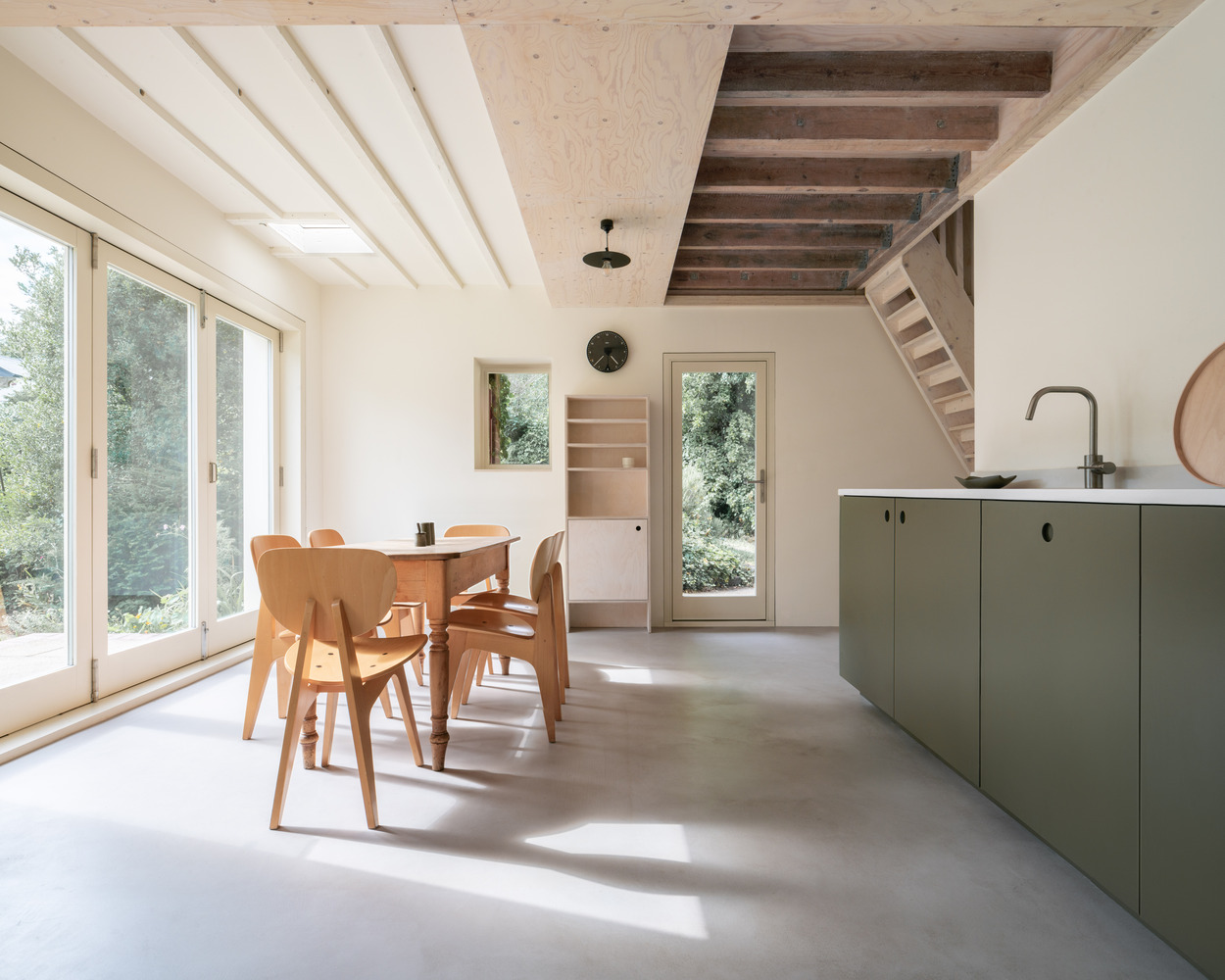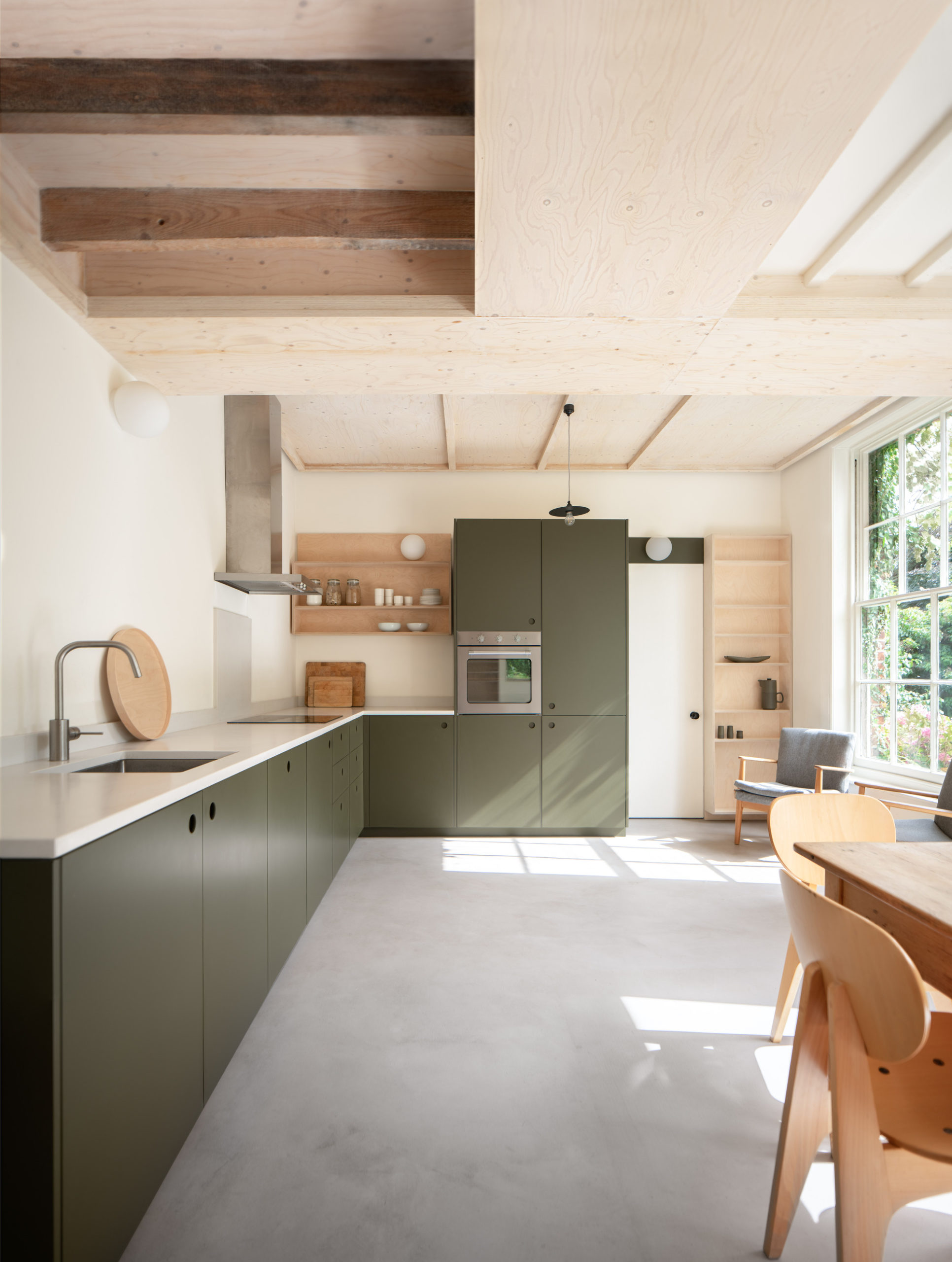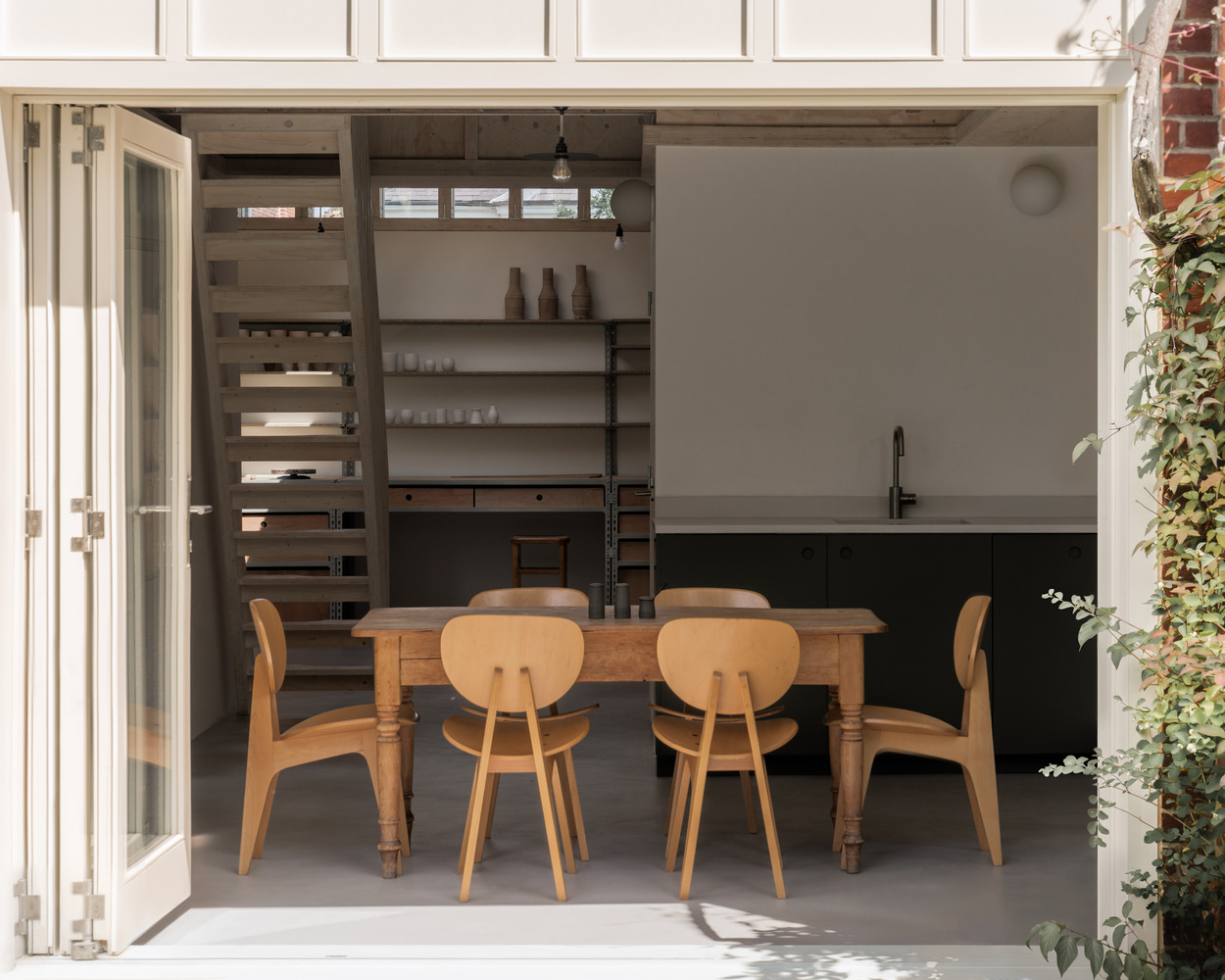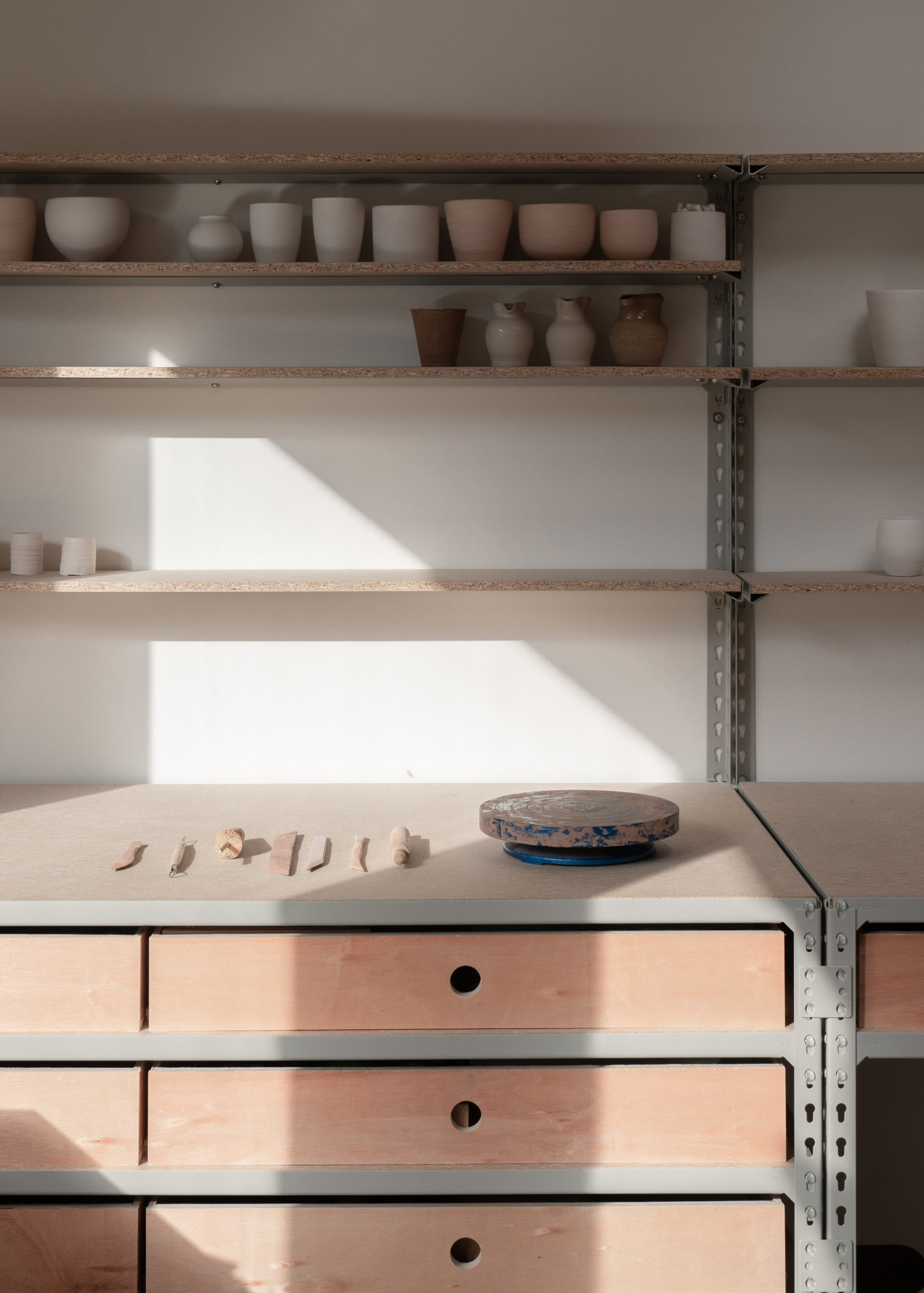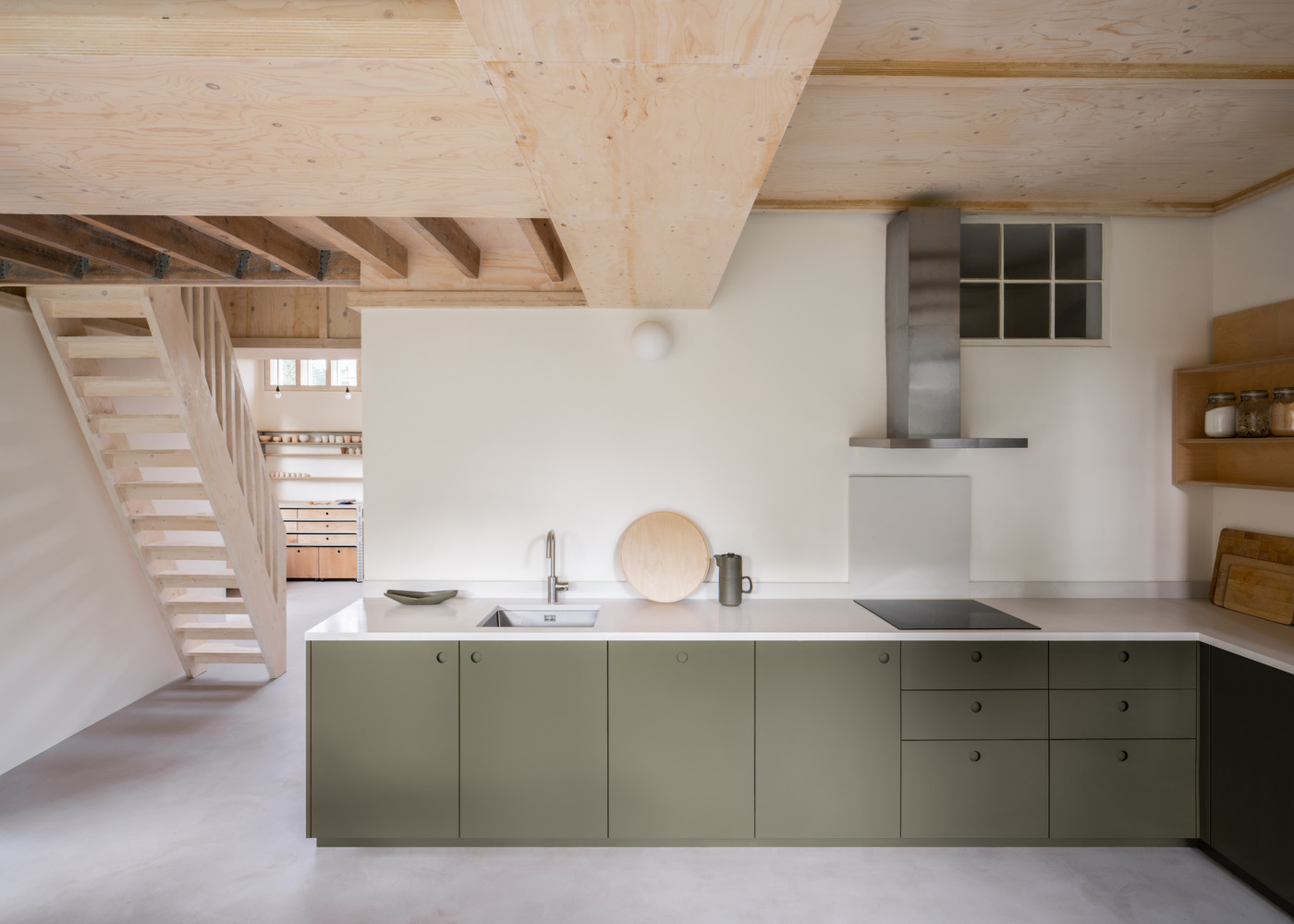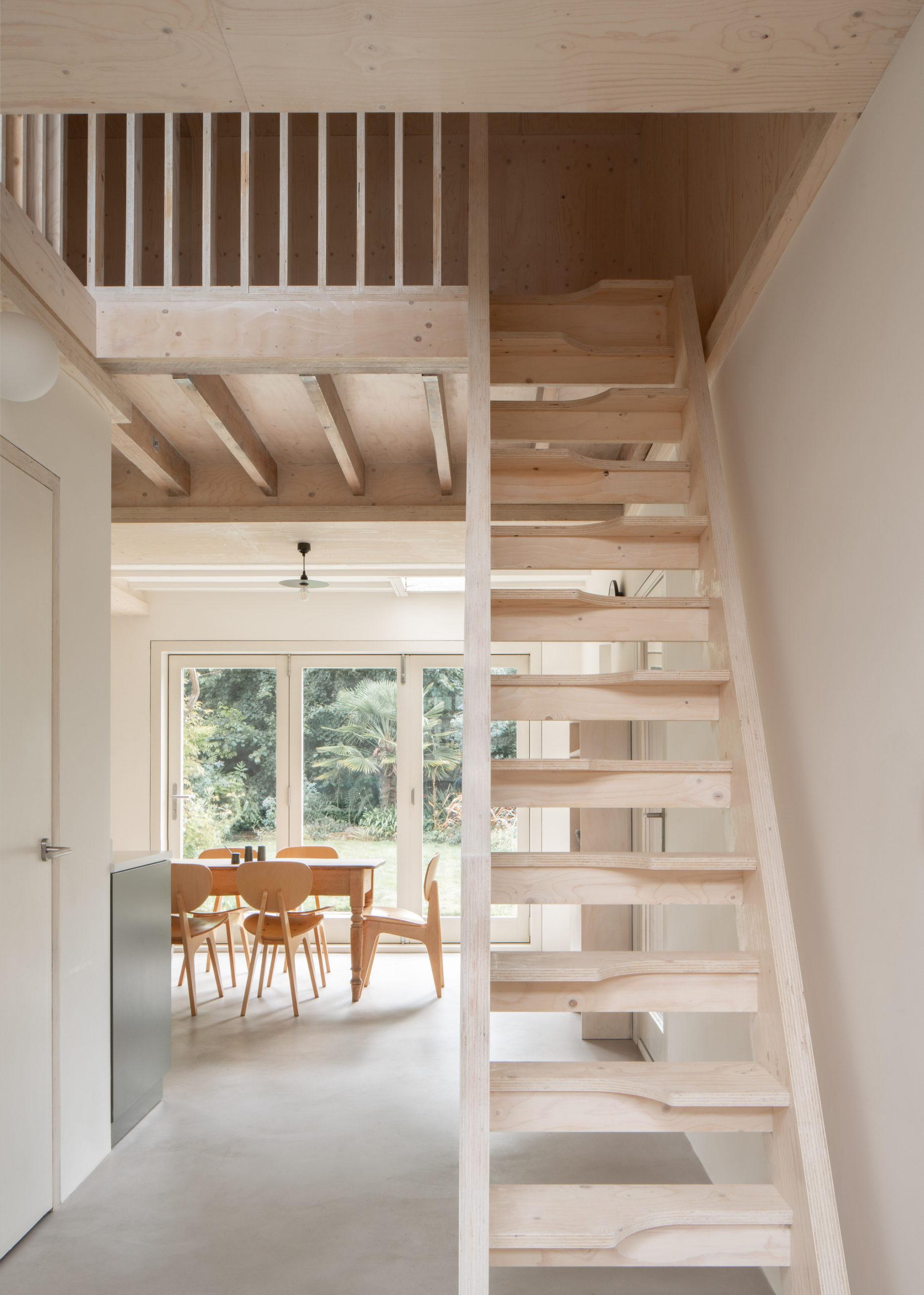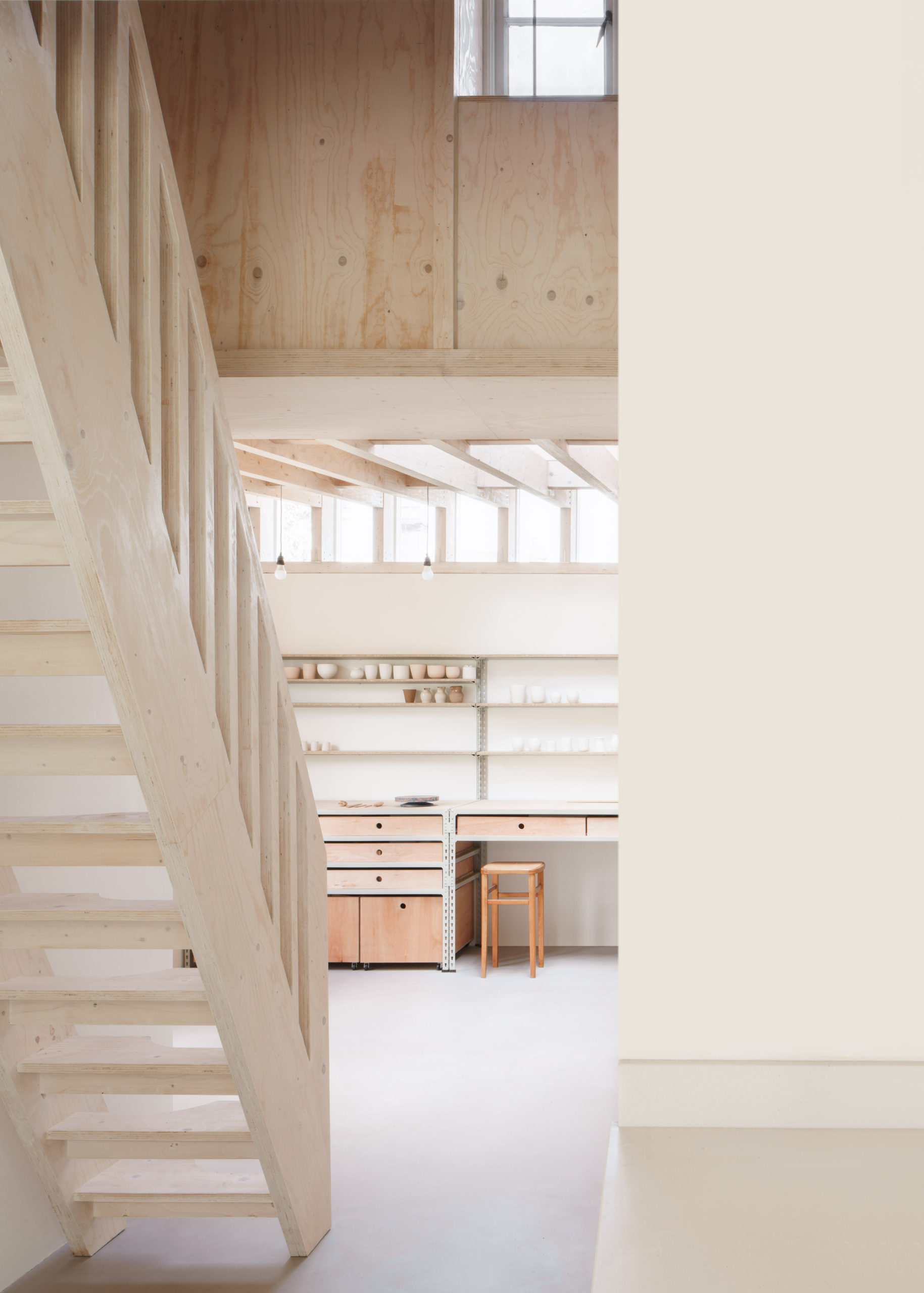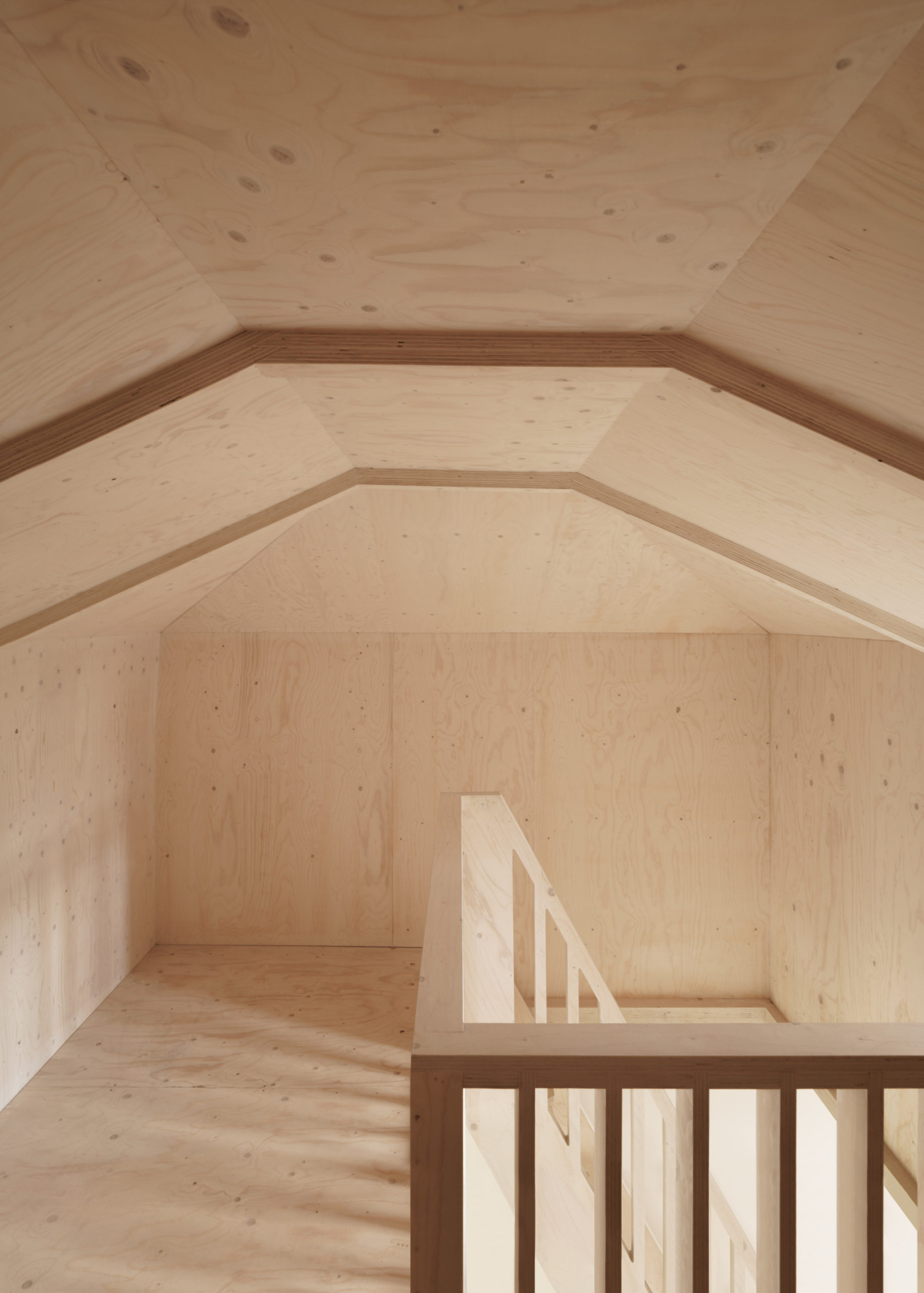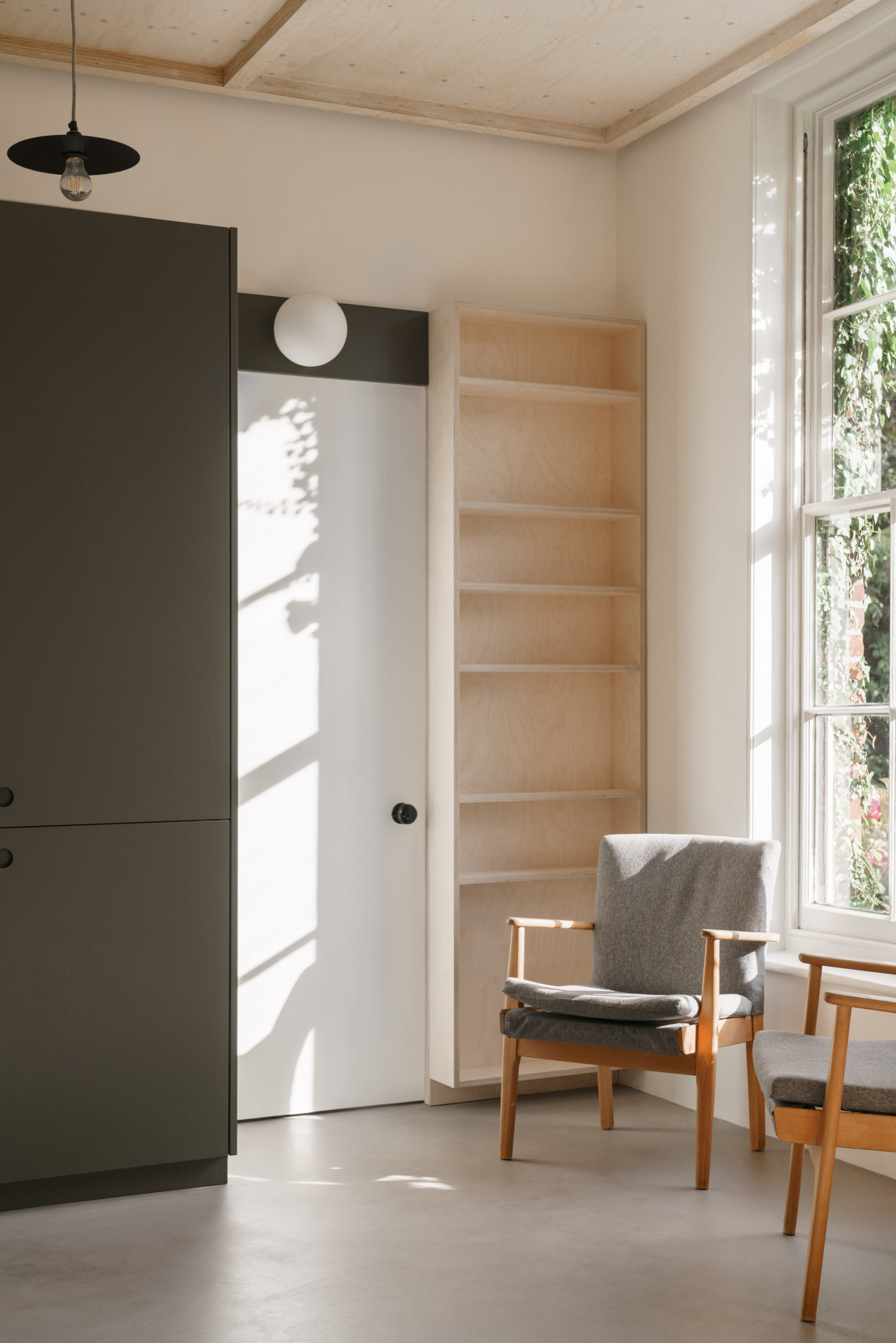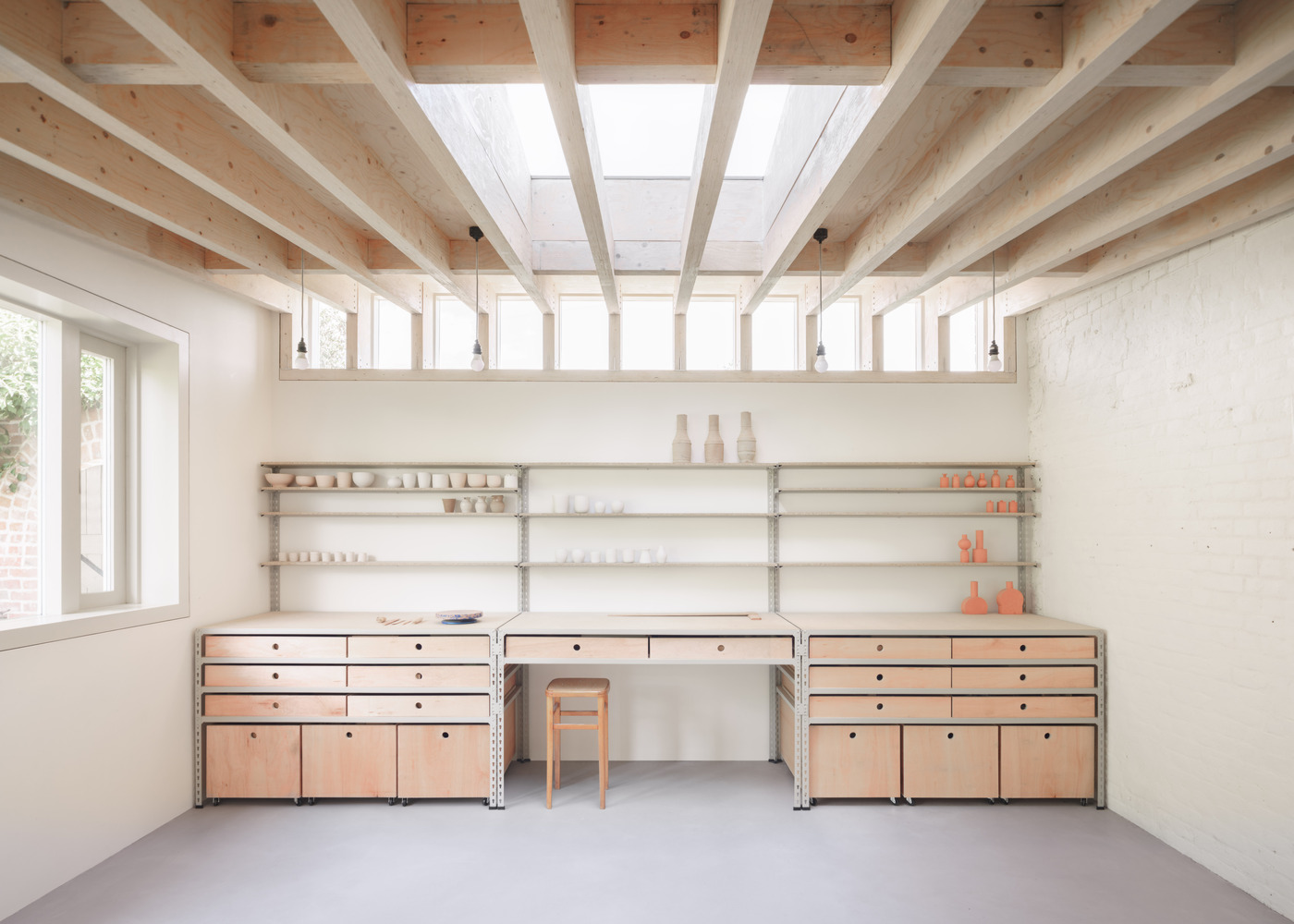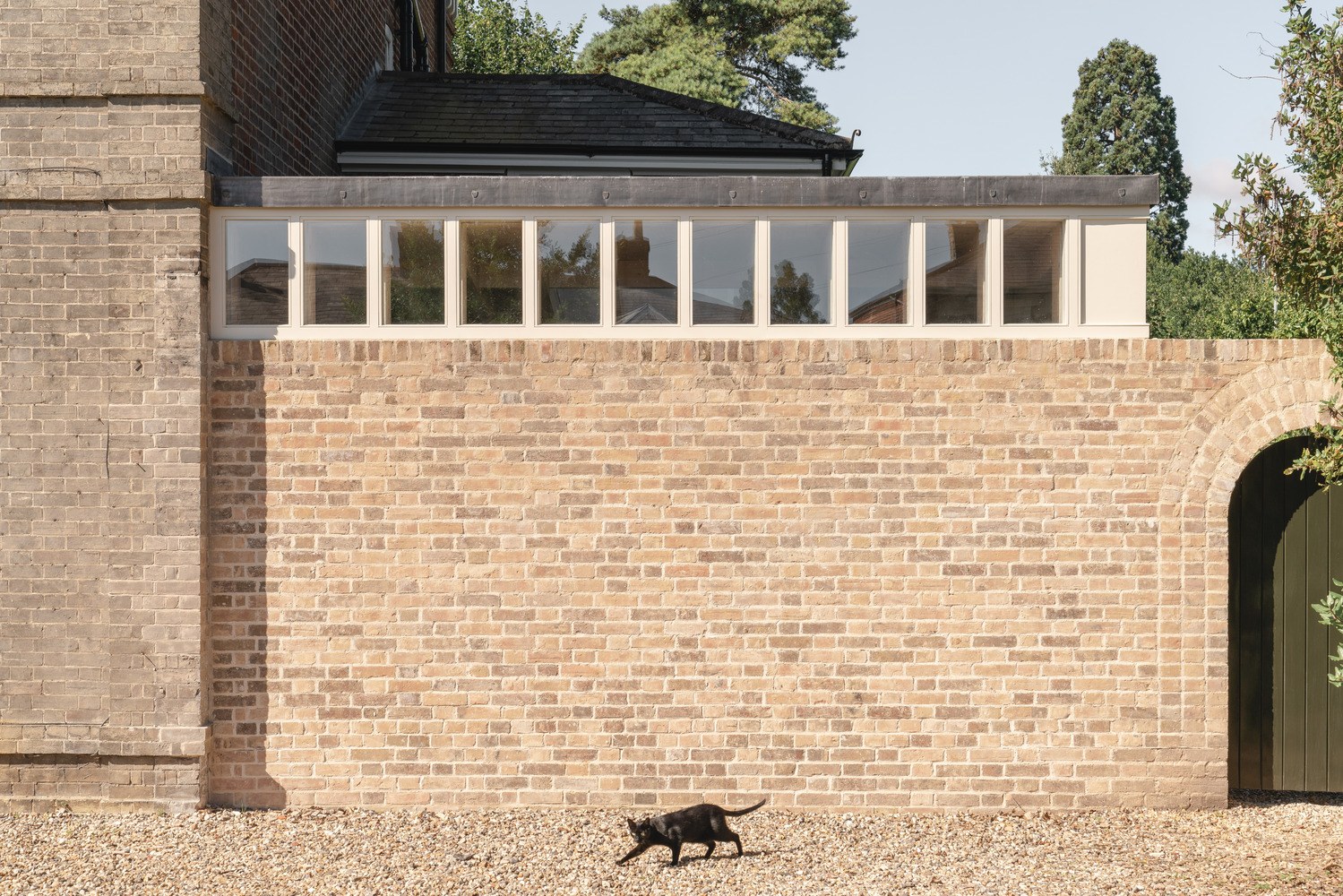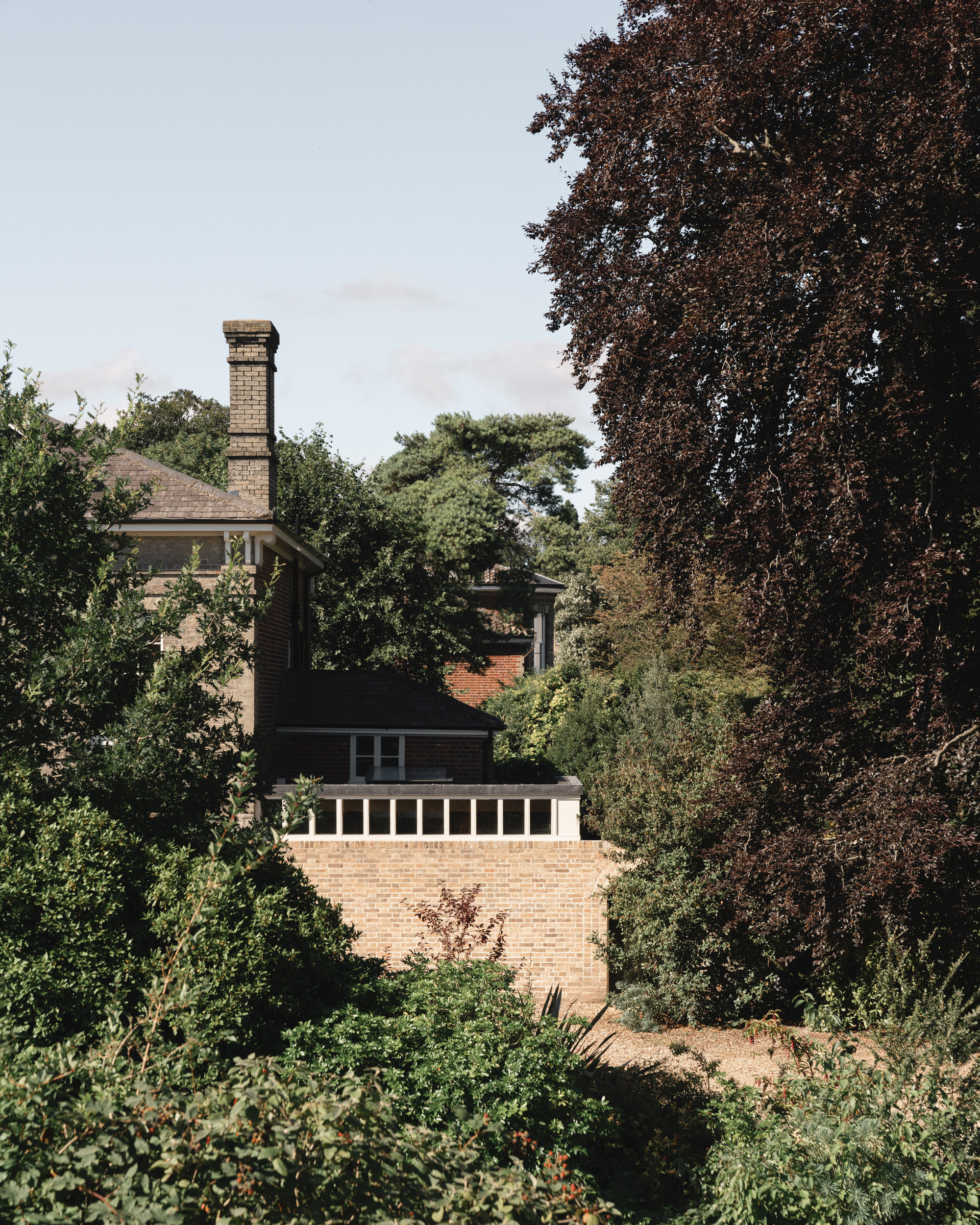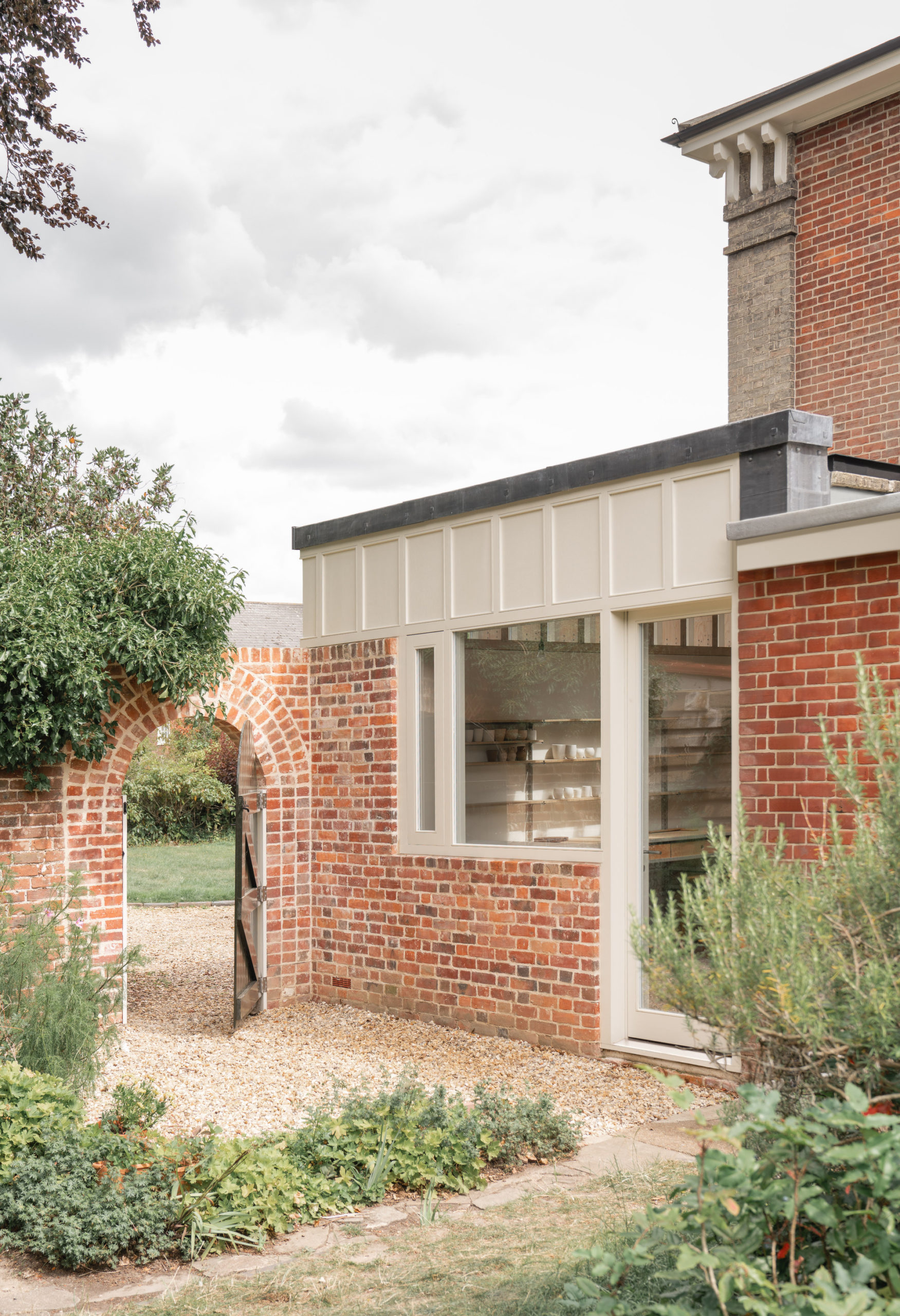Studio Nencini is a minimalist space located in Norwich, United Kingdom, designed by Alder Brisco. Walking the edge of Norwich’s leafy Golden Triangle you might glimpse, propped atop a brick garden wall, a ribbon of white wooden windows that light the studio of illustrator and educator Peter Nencini. Having first approached the architect Thom Brisco at the end of 2016, Peter and his partner, the designer-maker Sally Nencini, proposed a reworking of their home to form new spaces for making, cooking, and eating.
The house was built on Mount Pleasant in the 1860s, eventually forming part of the city’s Newmarket Road Conservation Area, with its local listing noting its street-fronting façade of Suffolk White bricks and the contrasting Norfolk Reds of its side and rear elevations. Throughout the twentieth century, a two-story side-wing gathered garage and kitchen extensions with adjoining pantry and utility rooms but arriving in 2013, with the kitchen a centre of their family life, the Nencini’s found the space landlocked beyond the reach of the beautiful gardens once cultivated by the plant geneticist who lived there before them.
At the same time, the garage was suffering from subsidence, and large cracks reached through its roof and façade. With growing children and two artists producing work within the house, the family recognized the potential for this cluster of tight cellular spaces to provide a new art studio and kitchen-dining space. The proposal springs from an appreciation of the area’s pattern of enclosure that twins open driveways at the front with tall-walled gardens to the rear.
With an aim to strengthen this character, the creaking garage has been replaced by a studio with its front elevation pressed back to complete the plot’s Victorian brick walling through which a new arched gateway gives access to the garden beyond. The front face of the garden wall is built in reclaimed white brick whilst the studio’s side elevation and the wall’s rear face use a reclaimed red.
The clearance of a series of internal walls and partitions creates an open link between the studio and an enlarged kitchen but the retention of a small utility room alongside the fabrication of a steep wooden staircase compresses this connection ensuring each may feel occupied with a degree of independence. New openings formed in the rear façade and flank wall offer long views through the house to the gardens. Alongside this reformation of the plan, ran an extensive application of new linings and thermal insulation that extends to the newly spruce-lined mezzanine.
Thought to have once been a maid’s quarters, at some time blocked off from access, this room has been reconnected to the body of the house through the partial removal of its floor and the addition of a short doorway. The result lends a double-height volume to the studio, reinstates a secondary route of vertical circulation, and forms what is imagined to become a small daylit library. Rising above, just as the stair drops below, the mezzanine appears as if a clearance amongst the varied joists and decks of the ceiling.
A collage of timbers old and new, this continuous realm of wood becomes the roof, platform, lining, and mullion, reaching the street-facing façade to rest atop the garden wall whilst permitting the stable north light the studio requires. Taking on the proportions of the individual Victorian panes adjacent, the new facades, and rear folding doors are topped by ribbons of fixed lights and beaded panels with which the frames of the fenestration below hold the rhythm.
Photography by Nick Dearden
